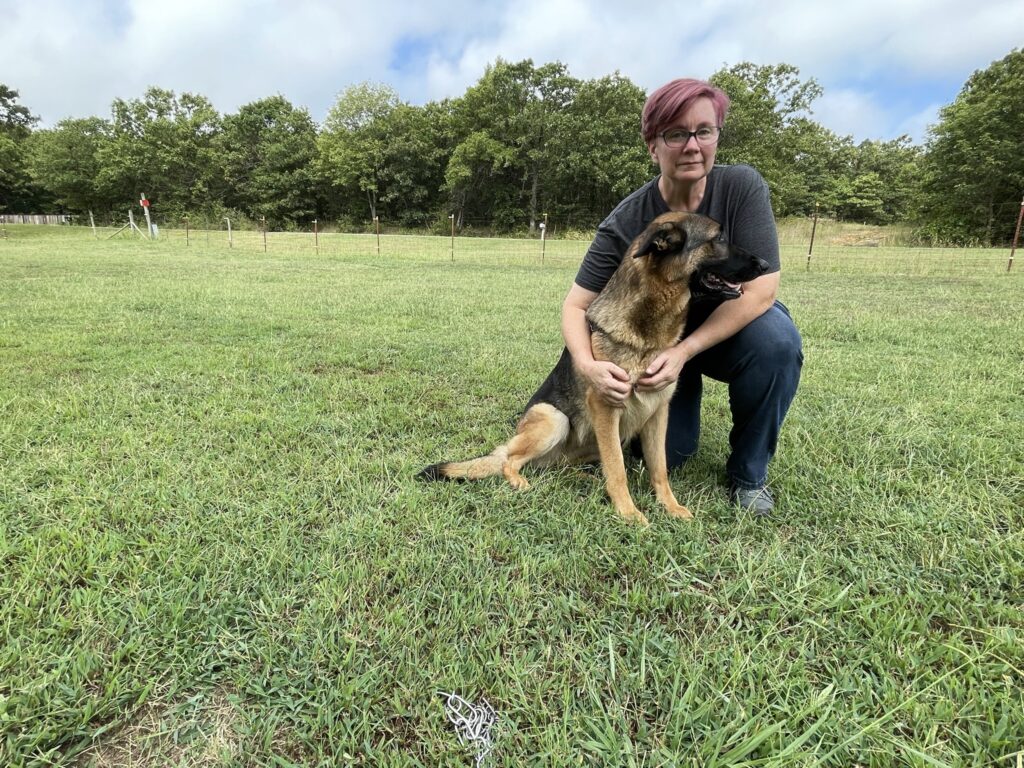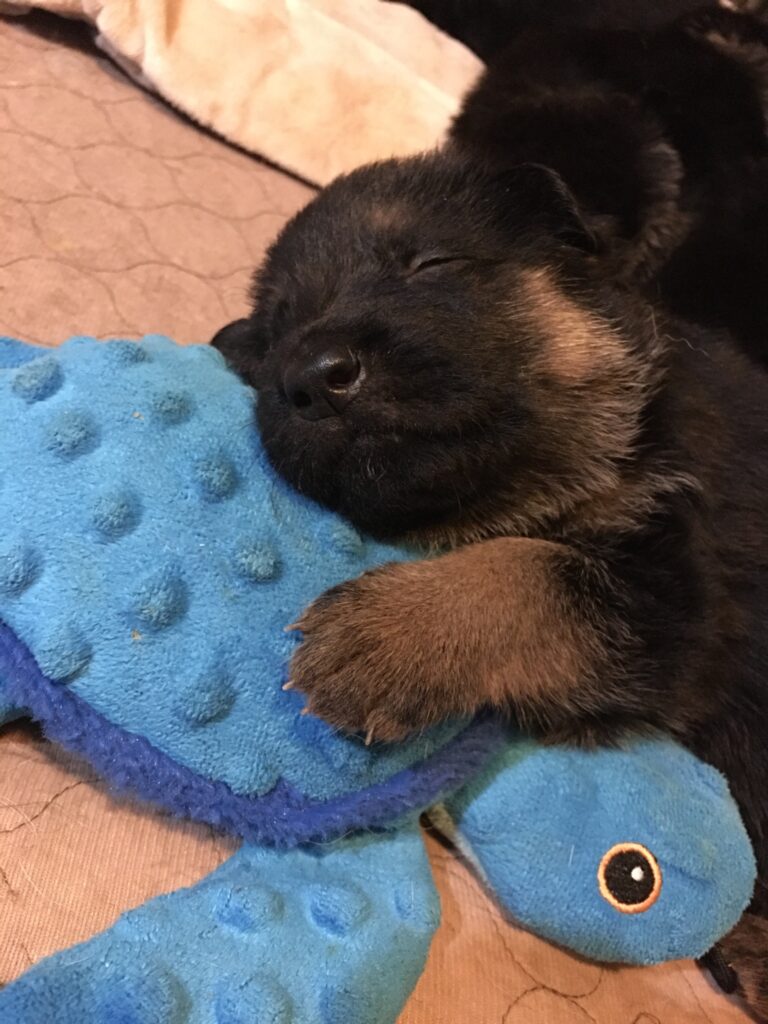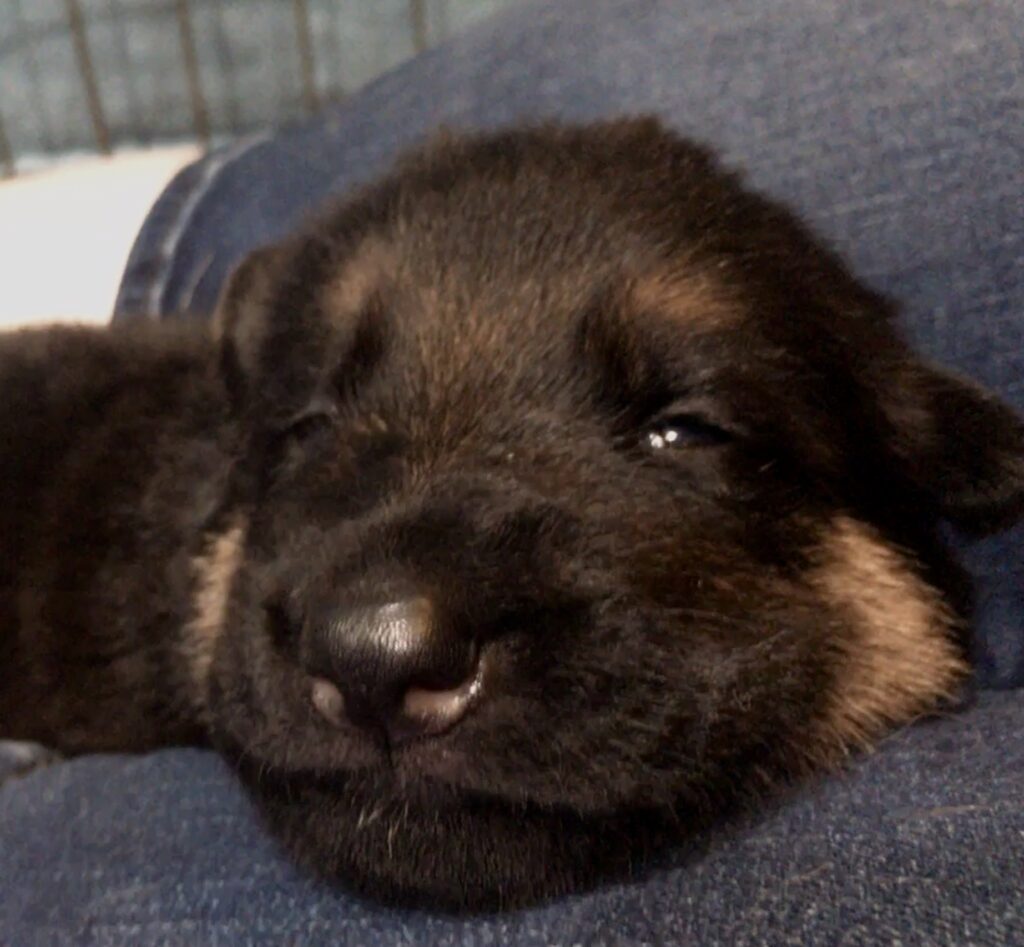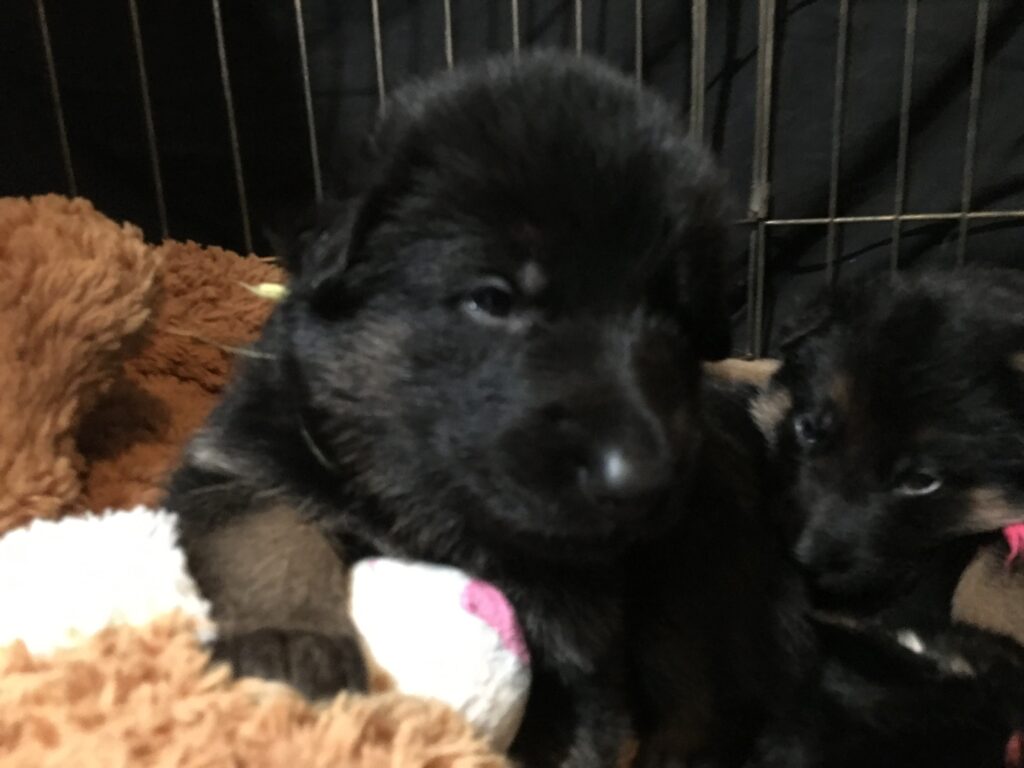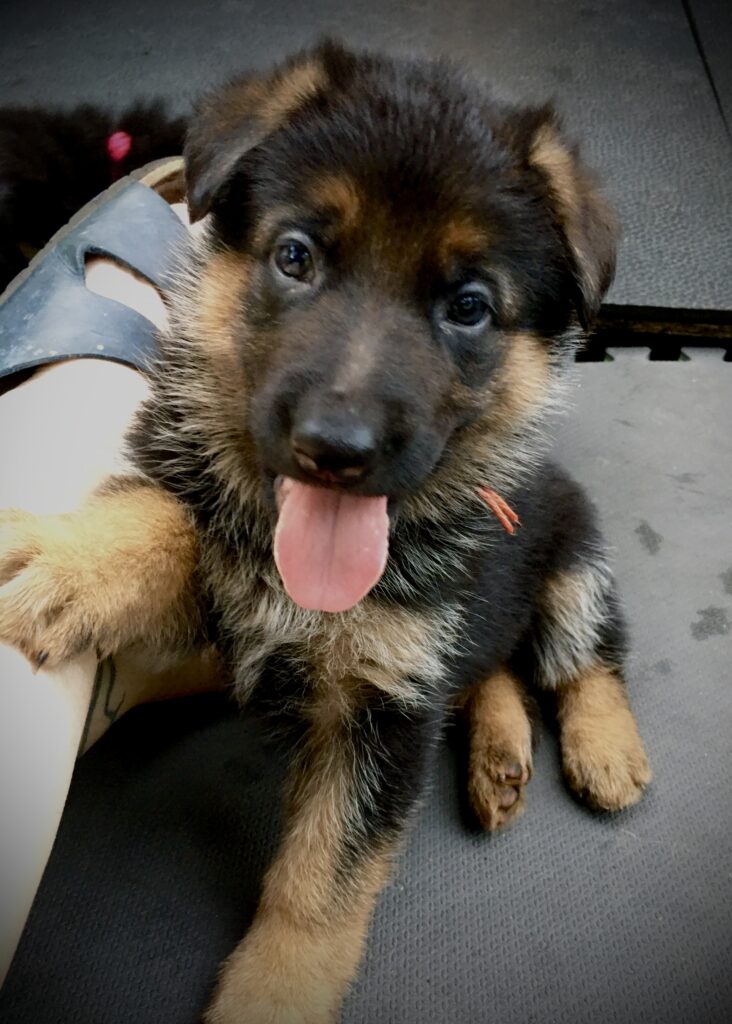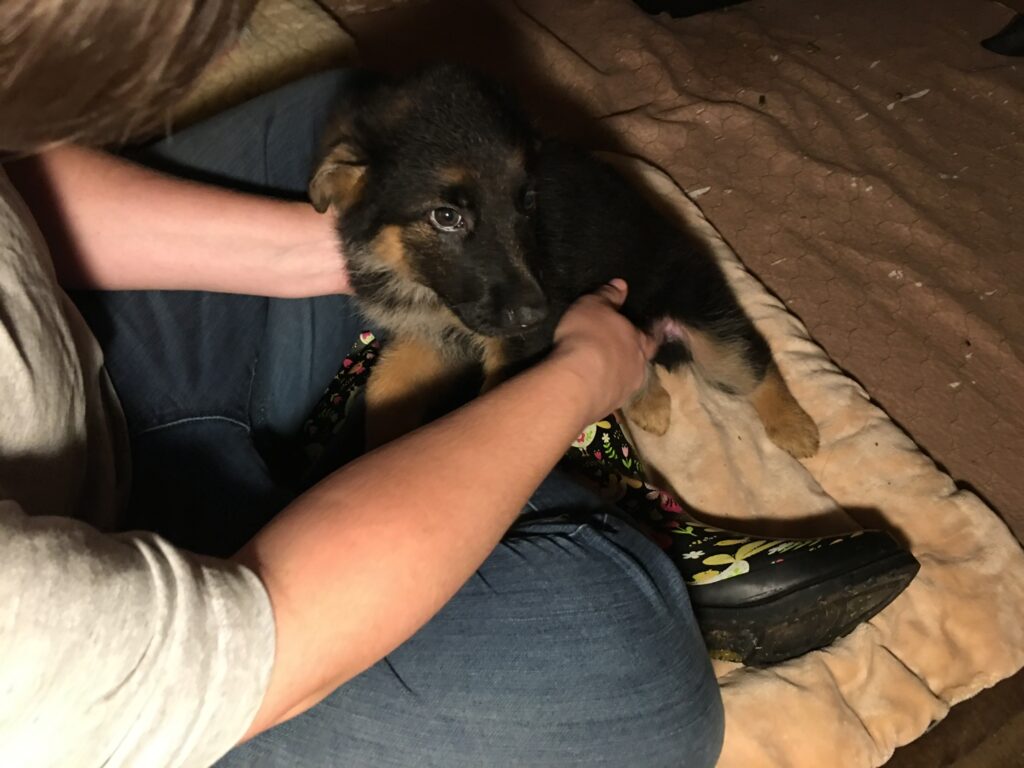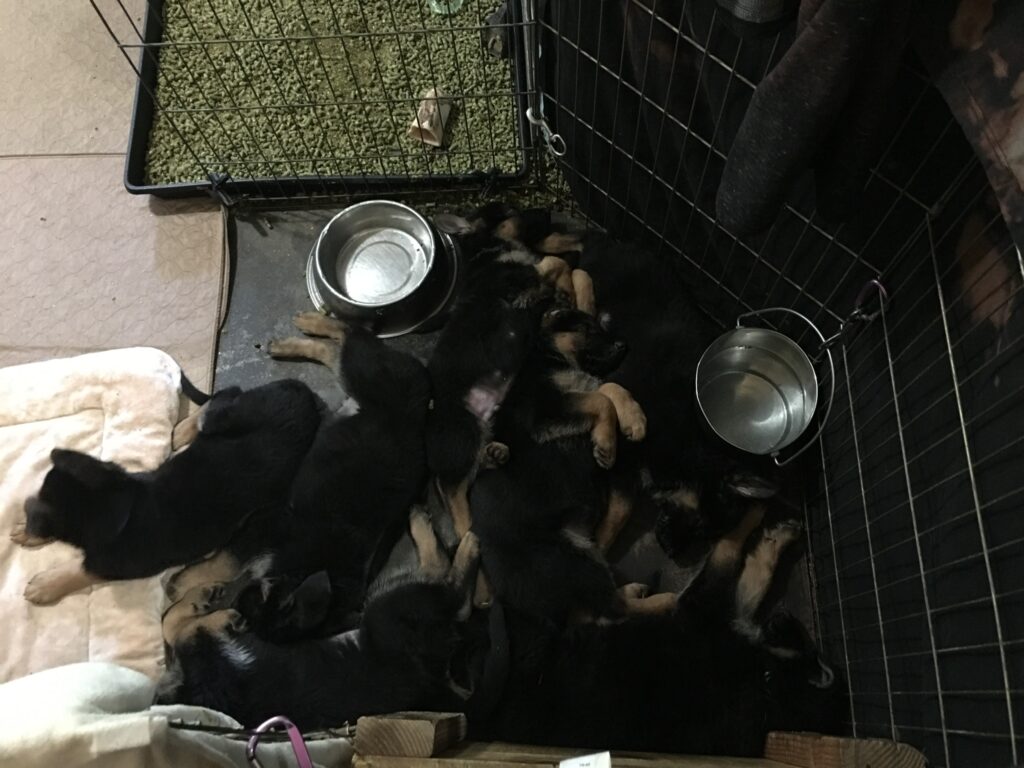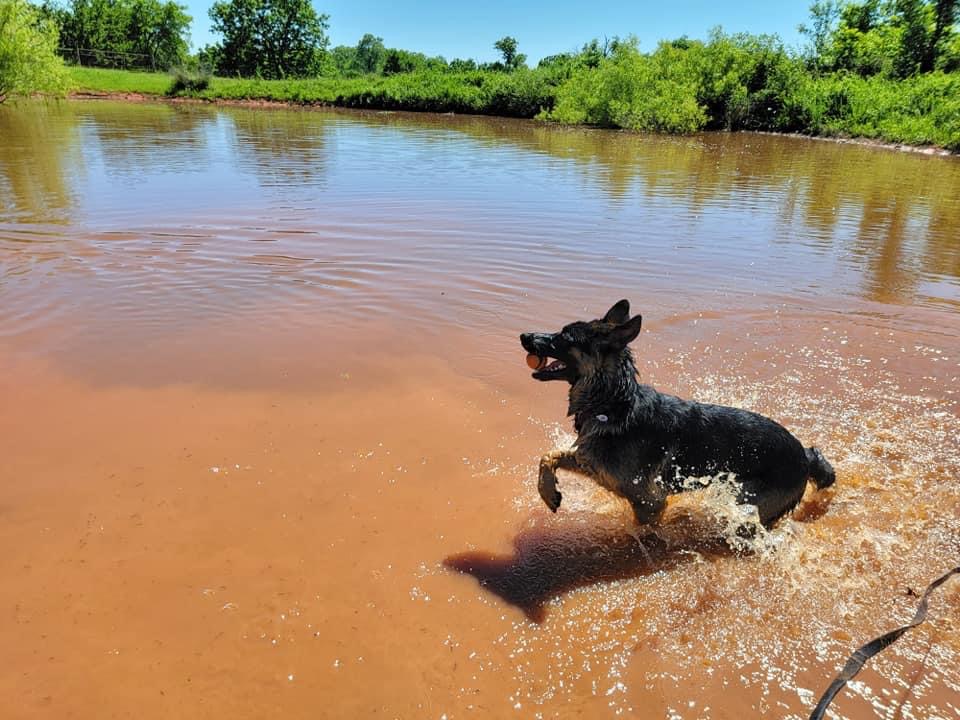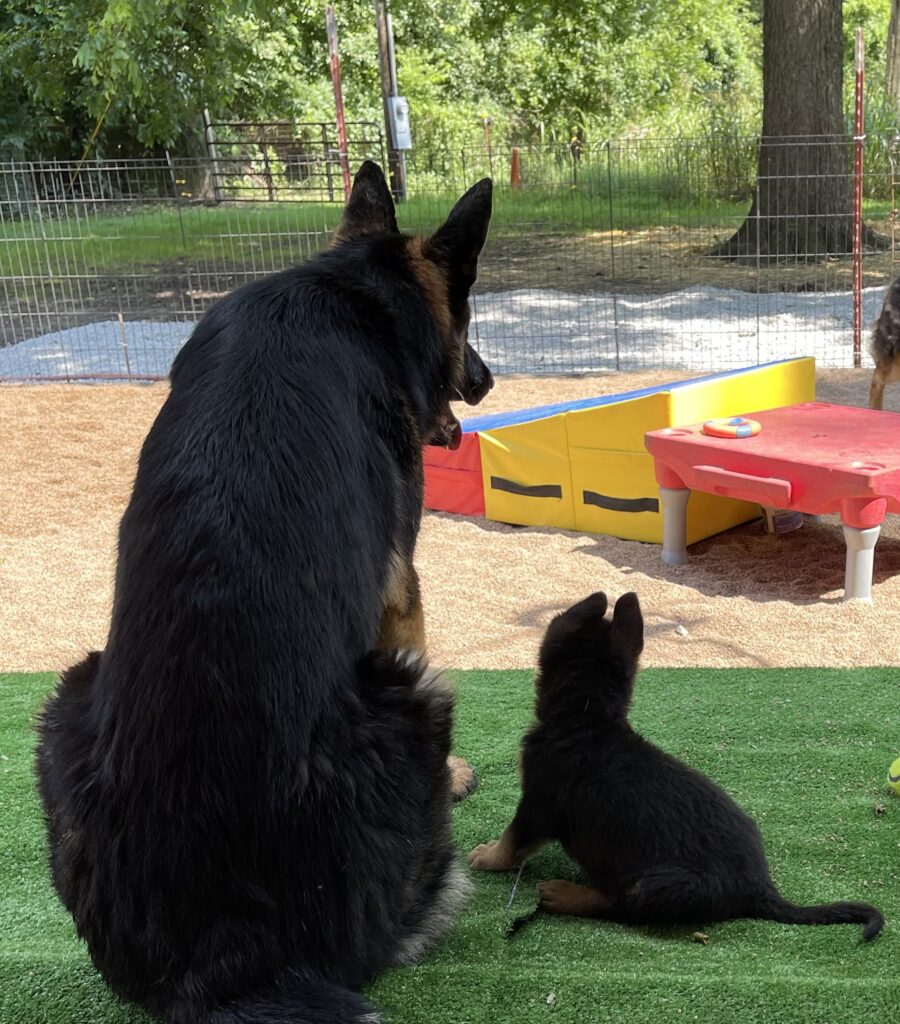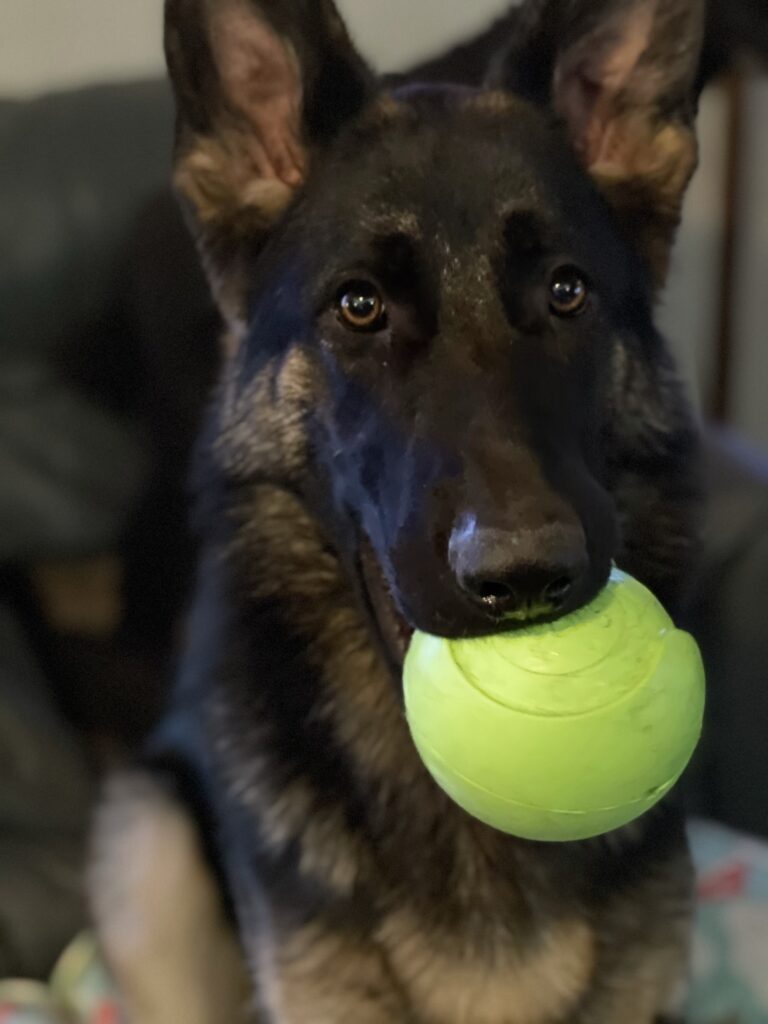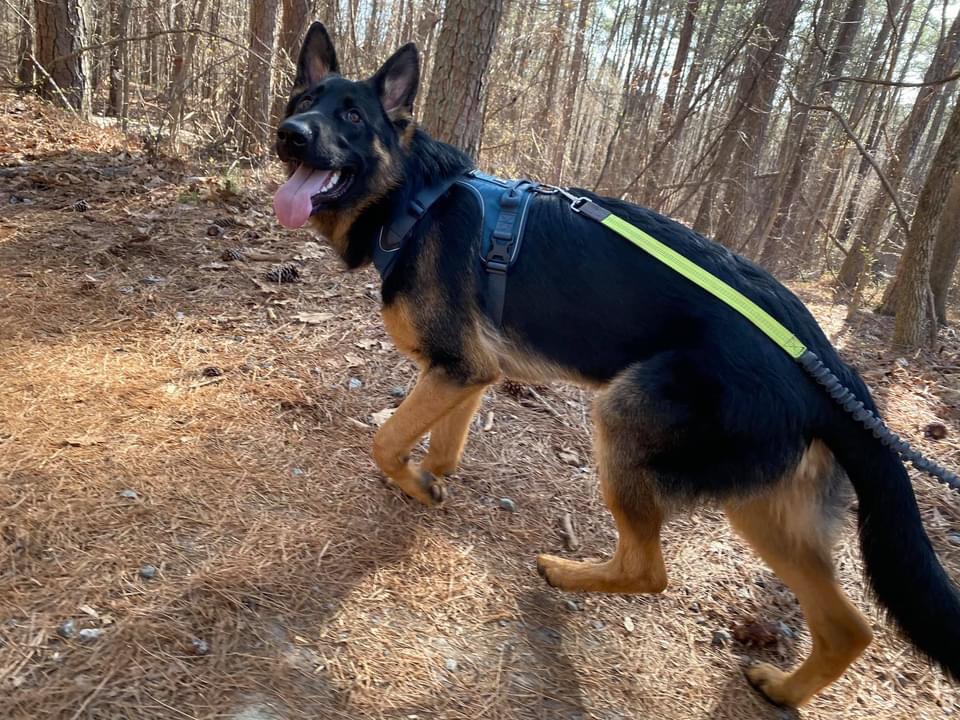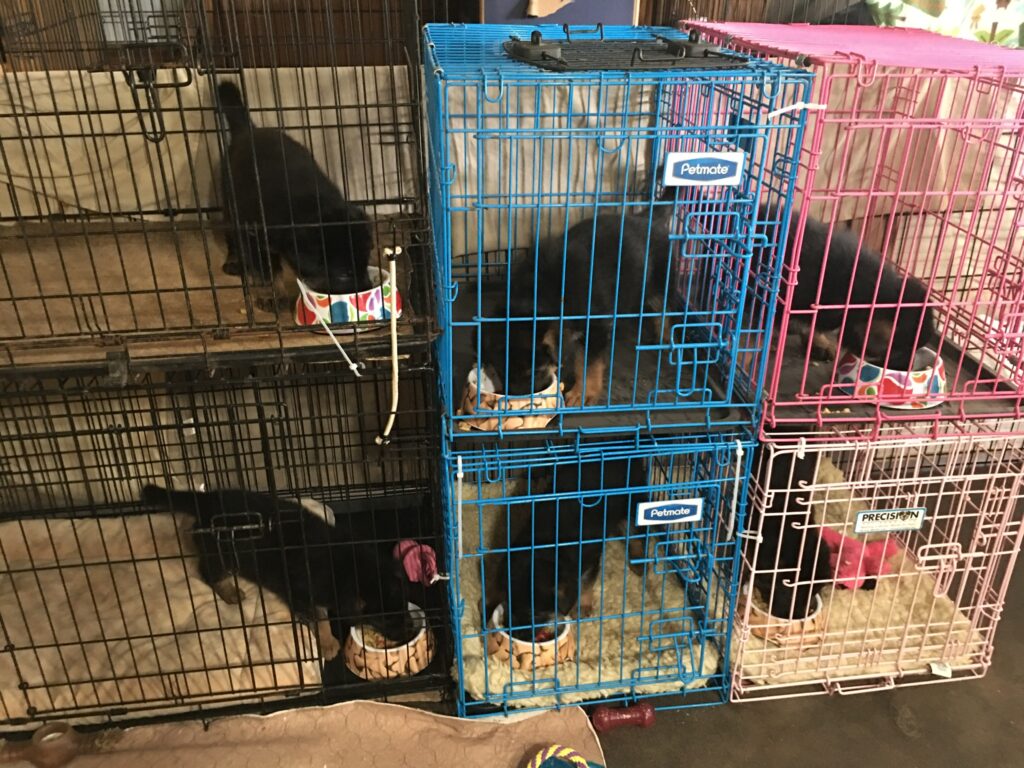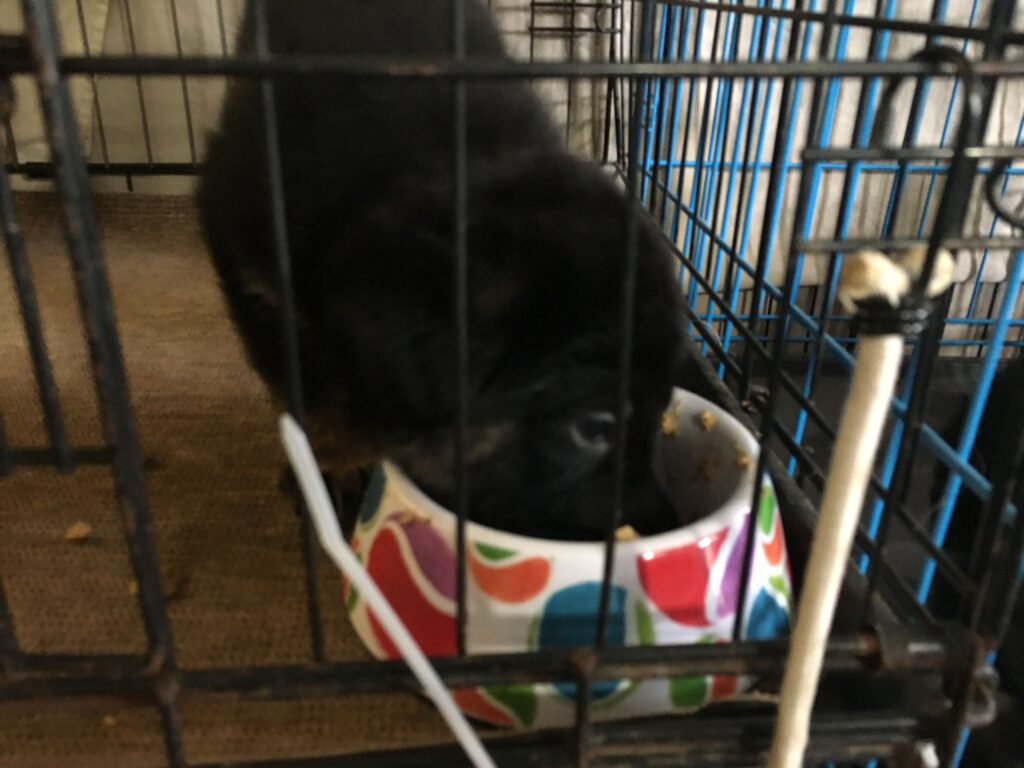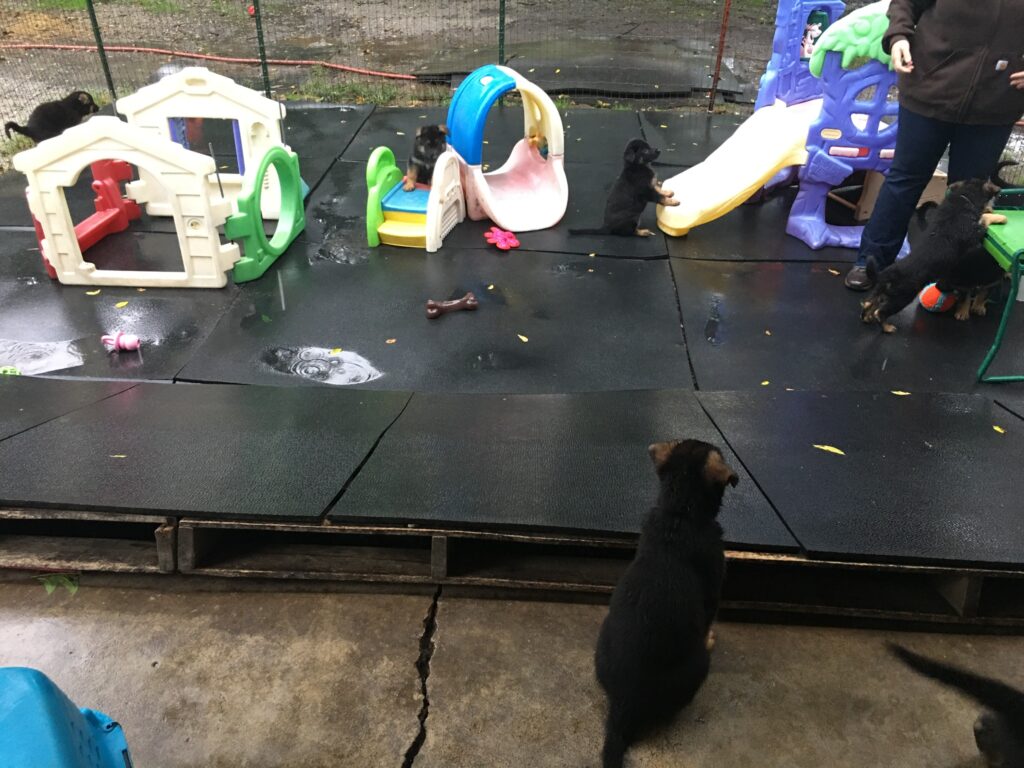Well Crap: When Bad Things Happen To Good Breeders, Part 1 Parvo.
“Susanne, this could be catastrophic” those were the words I heard through the phone. I had called my vet, at home, on a Sunday, as I returned home from Animal Emergency Center without my 6 week old puppy. Live-wire had developed a high fever, and intense malaise that morning and by afternoon parvovirus had been twice diagnosed and little Live-wire had been admitted to the ICU for overnight care and monitoring.
I was chilled to the bone by the words of my normally cheerful and optimistic long time vet, though not surprised, parvo virus is a fear that every breeder with common sense carries with them. All breeders fear things that can kill their puppies, and parvo is high on that list. We still have a generation of breeders and vets who remember when parvo was a novel virus, without a vaccine, and it killed dogs of all ages from the youngest to the oldest, from the infirm to the healthy in huge numbers. Thanks be to the scientists who developed a vaccine, and the veterinarians who have given them to millions of dogs. Despite this work, parvo virus is a crafty virus that has eluded most attempts at eradication. So I needed no reminder of the potential danger to my 12 6 week old puppies, or the potential cost for their treatment (parvo hospitalization can easily run $1000 per day for a single puppy and indeed Live-wire’s 12 hours of supportive care topped $1000). So my fear was two fold, would my puppies suffer and die, and would I be able to afford treatment costs that could in a worst case scenario climb well into five digits?
As Rebecca and I drove home, and with the help of our amazing vet, we formulated a plan for moving forward. Because breeders don’t have the luxury of taking time to breath and ask “why” and process thoughts and emotions when infectious disease is involved. There would be time for the How and Why later, but now was the time to act.
I’m writing about this now as we enter a new monthly theme project. This project is part of our professional growth initiative designed to ensure that as breeders and trainers we are not becoming stagnant but instead pushing ourselves to explore, learn, and consider a variety of subjects related to all aspects of our lives with dogs.
Because this project is designed to help us evaluate what is happening in our professional lives, we have chosen to focus for the month of September on Moving Through Difficulty In a Growth Mindset (Yes, I know it’s controversial). As breeders we have experienced several difficulties in our breeding program over the last few years, we have been evaluating how we have responded and will respond to such problems in the future. We wanted to share this process with our many friends, breeders, trainers, and dog lovers as part of our commitment to transparency and because breeders don’t exist in a vacuum, we learn from each other and we teach each other and that is how we all get better at our craft.

Our plan, coined Parvo Sucks, involved the following: Please note, we worked very closely with our veterinarian and his techs, we were in daily contact with the hospital and never acted without having a conversation with the vet. The following is what OUR vet recommended for OUR situation and it may not be what your vet recommends for you. Parvo is a serious disease and you simply must work with your own vet.
Step 1: Evaluate every puppy for signs of active infection: Monitoring temperature (every 8-12 hours), appetite, energy, hydration, and stool consistency. This step turned out to be the key to our success because we were able to identify a puppy and start treatment promptly, before the vomiting and diarrhea started.
Step 2: Until we could confirm that the bulk of the litter had been infected all infected puppies would be isolated. Once we knew the exposure had already happened we reunited the litter.
Step 3: Increase disinfect measures to include isolation protocols.
Step 4: Prepare for the spread of the virus from the Index Case (Live-wire) to the other puppies despite all these efforts, because it was most likely all puppies were already exposed to the virus.
Step 5: Gather all supplies we would need to treat mild to moderate levels of sickness at home. We purchased Pedialyte, parvo test kits, Fluids for subQ administration, Kaolyn-Pectin, Science Diet ID canned and dry and changed puppies over to this diet, and our good friend and client Melinda Luper DVM sent us a case of Proviable Forte for every puppy to have with every meal.
Together with our veterinarian we stocked up on medicine we would need to give puppies as soon as they developed any symptoms of parvo. Each puppy was taken for a medical assessment the first business day following the development of symptoms (and for a while I was at the vet every single day) and if the puppy experienced dehydration inducing vomiting and diarrhea the puppy would be checked into the hospital for IV fluids and supportive care.
The treatment protocol was started at the moment of the first symptom (for our puppies this was fever over 102F) and involved.
1. Long acting antibiotic injection given by the vet to prevent pathogens from leaving the compromised digestive system and causing sepsis.
2. Prescription anti nausea medicine to prevent vomiting.
3. Sub Q Fluids for any puppy showing any indication of dehydration. We offered one bowl of water and one bowl of pedialyte and the puppies drank the pedialyte over the water for the duration of their sickness. Once a puppy was well and healed they would prefer to drink water. If we did not witness a puppy drinking we made a note of that puppy and monitored every hour for signs of dehydration (which we could address through Sub Q fluids). If a puppy did not respond they would be admitted to the vet hospital.
4. Science Diet ID (canned and dry) was the sole diet during this time and puppies were fed meals in crates so their eating could be carefully monitored. The food was soaked in water to increase fluid intake and the Proviable was added to every meal.
5. Any puppy with moderate or severe sickness would be taken to the vet for evaluation asap, this meant I was often at the vet daily, or two to three times daily, having puppies evaluated for in hospital care. One puppy required in hospital care, Faraday, who became moderately ill and anorexic.
How things Shook Out.
I won’t lie, the following month was really hard, but it could have been So. Much. Worse. (after all, we didn’t loose any puppies). After the index case (Live-wire) we went three days with no more sick puppies before another 2 puppies broke with fever and started treatment, then 2 days later 8 of the 12 puppies broke with fevers (1 puppy never developed any symptoms at all!) and at that time every puppy was started on treatment. I wasn’t petrified every day until the last puppy was past symptoms……
Live-wire, the index puppy, actually had only very mild symptoms and after spending one night at the ER (for a tab of $800) getting supportive care his regular vet released him for ongoing care at home. He never developed any further symptoms except a single bad poop. One puppy, Colt, never developed any symptoms at all. One puppy, Faraday was very ill, with bloody vomit and diarrhea, and was hospitalized for 5 days of supportive care, and didn’t eat a single bite for 10 days! Faraday did fully recover, after giving us quite a scare. The rest of the puppies exhibited the following symptoms: Lethargy for one or two days, fever for no more than 1 day, a few puppies missed a meal or two, some never stopped eating. Most puppies had one or two days of bad poop, some shed their intestinal lining and this was obvious from their stool, others did not and had just loose stool. Aside from the window of sickness, averaging 24 hours, this litter had outstanding stool quality (which I found quite odd and credit to the Science Diet ID and Proviable Forte).
After 1 month from first to last puppy showing symptoms, and another month of recovery, all puppies were tested for parvo via tests I bought and administered at home and no puppies were still shedding the virus when tested and were released by our to go to new homes.
This delayed send home from our usual 9 weeks to 13 weeks of age. Despite being in the middle of a pandemic we were able to schedule weekly visitors for the puppies once they were well to ensure they had adequate socialization. We continued the Puppy Culture protocols which are already designed to extend through 12 weeks.
No puppies died, or had severe sickness (even as sick as Faraday was he was still classified as moderate), and all recovered quickly and completely. No adult dogs became ill, and all were current on vaccinations (meaning they had received a parvo vaccination sometime in the previous 3 years).
All puppies went to their amazing and supportive families by 3 months of age, and our feedback on the litter is all positive to date, with no ongoing problems related to the illness, treatment, or delayed send home. This litter is now over a year old and as healthy and happy as we could have hoped.
Happy Puppies, Happy Breeder
Interesting things I learned, good sources of info, and about my case in particular:
1. No matter what you do don’t force food on an anorexic puppy. When puppies are sick with parvo their gut loses it’s lining and pathogens move easily from the gut to the abdomen, causing sepsis. Puppies instinctively know when they should not be eating, so undue encouragement to eat can actually make them sicker. I learned this from a fellow breeder and remembered it whenever I was tempted to try to “get” puppy to eat something. Instead I focused on keeping every puppy hydrated.
2. My puppies mild case and full recovery was most likely due to inherited maternal antibodies still being present at the time of infection. I assumed that maternal antibodies PREVENTED infection, but they don’t always, instead when an infection does occur they help the puppy mount a rapid and effective immune response. So my annual vaccination schedule for breeding females was likely the reason this case was so mild overall, the puppies still had maternal antibodies.
3. Sources of info on infectious diseases in dogs are plentiful, but many are not evidence based nor do they reflect the consensus view. When I traced many of the common things I had heard about parvo to the sources of good evidence based information I found a LOT of what I thought I knew about parvo to be untrue or partly true, this included information I had heard from veterinarians, or read on websites and authored by veterinarians and of course tons of things I heard from breeders. I opted to only use a small number of reliable sources for information, I ran these by my vet for confirmation: This resource for Cornell, this one from Revival Animal Health who have a wide variety of educational resources and products, along with experts to help you know what you need, and I contacted UWM to see if nomographs would be part of our moving forward plan (spoiler, they are not) and to get feedback on our vaccination plan moving forward now that our location was highest risk (spoiler: I was told to vaccinate early at 4 & 6 weeks with a parvo only vaccine before moving to a traditional vaccination schedule of 9/12/16 weeks- this is a standard vaccination protocol for endemic parvo areas and one widely used by breeders, but it was nice to have a leading infectious disease expert tell me this was the best course of action.
4. We now use Wysiwash or Vircon to disinfect everything outside, grass, gravel, cement, all of it.
5. We now use Rescue to disinfect everything indoors.
6. And none of that would have helped prevent my puppies from getting parvo. You see my puppies were infected with parvo during our state’s Safer At Home lock down due to COVID-19. This means we were not leaving our property, or if we did we did not leave our car, at all during this time. So it’s almost impossible that we brought the virus home on our shoes or clothes. We also have a fenced yard, so free roaming dogs bringing the virus on the property is unlikely, and while we do have game in our area there is no evidence they ever enter our yard. We do however live in a rural area with a large population of free roaming and unvaccinated dogs, and we have insects. In our case the likely vector of the virus was actually flying insects and in particular flies, that carried the virus from infected dogs in our area to our puppies when they were outdoors on their puppy patio. So, while we are certainly disinfecting constantly now, to kill what virus remains, or is brought onto our property, it was a hard lesson that you can literally do everything right and STILL have bad things happen. Oh, and LOL, our puppy patio which was easily disinfected was not screened for flying insects, and yes, screening it in is definitely on the “to do” list.
We chose to handle the transparency aspects of our summer of parvo with full disclosure via our Facebook page and private client group for the puppy buyers of that litter. While we did get a bit of push back, mainly “about us” and not “to us” the overwhelming response from our colleagues, clients, and friends was overwhelming support.
We asked for, and received donations to help with the cost of treatment, while I was really uncomfortable asking for help I’m glad I did because this really helped to relieve some of the stress of buying supplies and treatment costs for the puppies.
We updated everyone almost daily, including how the sickest puppy, Faraday, was responding to treatment.
We reached received so much support from fellow breeders, from kind words, to advice, to the daily check ins I received from our good friend Christiana at Kaos Farm Goldendoodles that kept me focusing on the good things of the day, and prevented me from getting mired in the mud of dread, our long time friend Dani at Avid Aussies helped with practical advice about disinfecting that helped my sleep deprived brain grasp what I needed to do right then and who suggested contacting Revival to get supplies asap. Of course my ever patient vet, Dr. Patrick Grogan at VCA Woodland East and the entire staff of the animal hospital, were endlessly kind and understanding and undoubtedly saved my puppies lives.
Our Austerlitz Family was, as always, wonderful and supportive. Many of our clients who are veterinarians reached out to see if they could help, Dr. Melinda Luper in particular answered so many questions, and sent me the Proviable Forte that so helped my puppies gut heal up. Every family was able to take home their puppy, and that made us all just so happy.
But I don’t want to gloss over how hard it is for breeders to share the “nuts and bolts” of breeding dogs, because it’s hard. For decades breeders have been demonized for breeding the dogs people want to share their lives with, this never ending drum beat has been so constant that breeders themselves have too often internalized it. Breeders who believe that breeding dogs is “dirty business” feel guilty, and make a big show about how IMPORTANT their breeding programs are because champions, and titles, and “improving” the breed. Breeders who have internalized the shame of breeding are also aggressive towards other breeders they deem are not “pure” enough or good enough, and so they go out of their way to show everyone how they are not “that type of breeder” by attacking them, bullying them, and demeaning them in the name of “educating”.
So breeders are vulnerable at every turn. They are a target for the Animal Rights Community, the Adopt Don’t Shop Community, the Dog Snob Community, and the “I’ve Never Bred A Litter But If I Did This Would Never Happen To Me Because Breeding Is Easy” dog fancier community, and so breeders have every reason to be defensive and closed up.
I feel this too, don’t kid yourself, and I’ve been on most sides of ugly behavior in my life. But they say as you get older you get both wiser and more radical, and I hope that I’m both. Either way, I’m not afraid of what others might think of me at this point in my life.
Breeding dogs is much more difficult than most people realize, Mother Nature is a killer and she’s out to end most puppies if she had her way. The natural order of things is that most litter born animals die before sexual maturity, the only thing that stands between this outcome and our domesticated animals is human intervention. That is the breeder and their veterinarian, they are the ones standing between nature and puppies.
So, next time a breeder shares some difficult experience they have had, instead of trying to find a reason The Thing Happened, or think that it could not happen to you, instead reach out and offer support and encouragement. Instead of throwing out all manner of social signals to tell everyone how responsible a breeder you are, try offering support and encouragement. Basically, be kind, empathetic and assume others are competent, do these things visibly so that others will see good behavior and model it themselves. Be the one that makes a safe place for transparency.
Next Up: When bad things happen to good breeders, Part 2: Hip, elbow dysplasia and birth defects.
Be sure to sign up for our newsletter! This is where we are posting new blogs, events, breeding and litter announcements, and information on our new podcast (squeee!)
